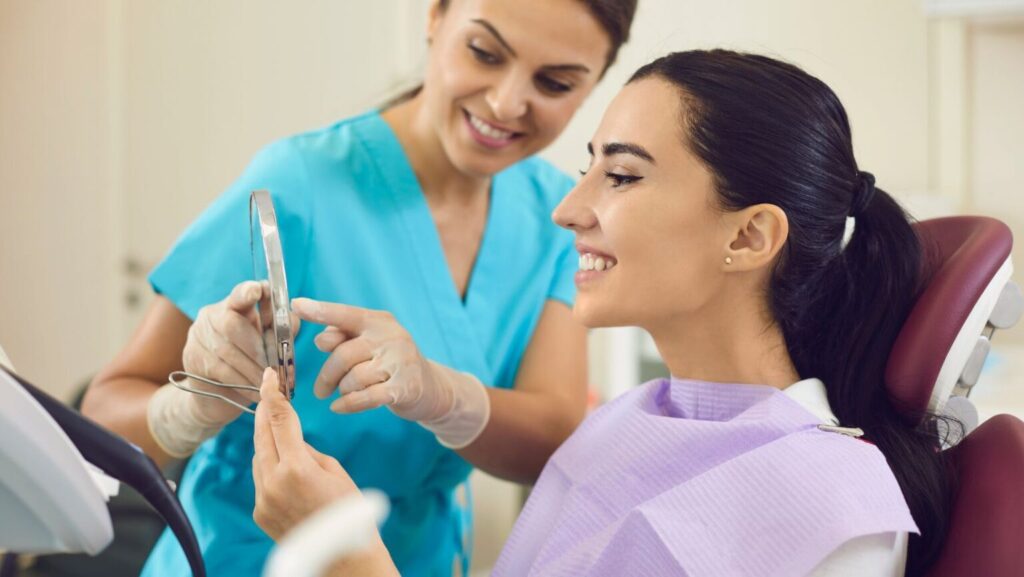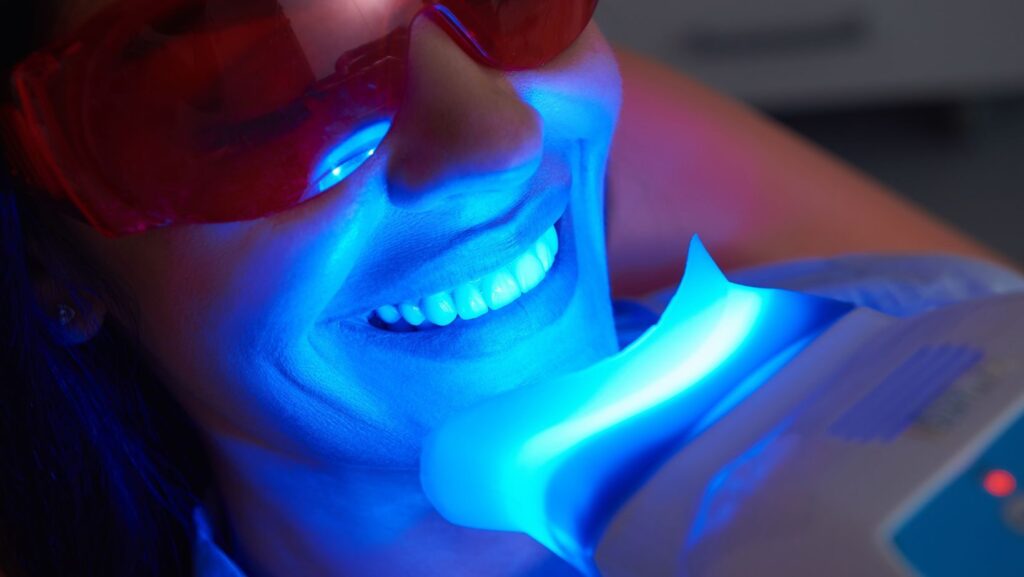Teeth whitening has become one of the most popular cosmetic dental procedures worldwide. Everyone wants a whiter, brighter smile, and thanks to numerous at-home kits and professional services, achieving this is more accessible than ever. But when it comes to DIY vs. professional teeth whitening: what really works, many people remain confused.
In this comprehensive article, we’ll explore the advantages and disadvantages of both options. We’ll analyze the differences in cost, results, safety, and long-term effectiveness, and help you decide which whitening method is right for your smile.
Understanding the Basics of Teeth Whitening
Before diving into the comparison, it’s important to understand what teeth whitening is and how it works. Teeth whitening typically involves the use of peroxide-based agents to lighten the color of teeth by removing surface stains and discoloration.

These agents penetrate the enamel to reach discolored molecules, breaking them down so the teeth appear whiter. The two most common types of whitening agents are hydrogen peroxide and carbamide peroxide.
Types of DIY Teeth Whitening Methods
There are several DIY teeth whitening methods available, and they vary in terms of ingredients, strength, and effectiveness. Here’s a look at some common options:
1. Whitening Toothpaste
This is the easiest and most affordable option. Whitening toothpaste uses mild abrasives to remove surface stains, but it typically doesn’t contain peroxide and won’t dramatically change tooth color.
2. Whitening Strips
Over-the-counter strips are coated with peroxide and are applied directly to teeth. They’re easy to use and offer noticeable results within a few weeks but may cause sensitivity.
3. Whitening Trays
Some DIY kits include trays that are filled with a whitening gel. These provide more even results than strips and allow the gel to reach more surfaces of the teeth.
4. Natural Remedies
Some people turn to natural solutions like baking soda, charcoal powder, or oil pulling. However, these remedies lack scientific backing and may even damage the enamel if overused.
Professional Teeth Whitening Methods
Professional whitening is done under the supervision of a dentist. It includes treatments that use stronger whitening agents and sometimes light-activated technology. Some popular professional treatments include:
1. In-Office Whitening
This method typically uses high-concentration peroxide gel activated with a special light or laser. It offers the most dramatic and immediate results, usually in a single session.
2. Custom Take-Home Kits
These kits are provided by dentists and include custom-fitted trays and prescription-strength gel. They offer more gradual results but are stronger than OTC options.
DIY vs. Professional Teeth Whitening: A Detailed Comparison
To help you make an informed decision, the table below outlines the key differences between DIY and professional whitening:
| Aspect | DIY Whitening | Professional Whitening |
|---|---|---|
| Cost | $10 – $100 | $300 – $1000+ |
| Effectiveness | Mild to moderate whitening | Moderate to dramatic whitening |
| Time to See Results | 1–4 weeks | 1 session (in-office) or 1–2 weeks (take-home) |
| Safety | Risk of misuse or enamel damage | Safer due to expert supervision |
| Longevity | 1–3 months | 6 months to 2 years |
| Customization | One-size-fits-all | Tailored to individual dental structure |
| Sensitivity Risk | Higher (if misused) | Managed by professionals |
| Whitening Strength | Low to moderate | High-strength gels and tools |
Which Option Is Better for You?
The answer to “DIY vs. professional teeth whitening: what really works?” depends on your budget, sensitivity levels, and desired results.

Consider DIY Whitening If:
- You’re on a budget.
- You want to try a less aggressive solution first.
- Your teeth are mildly stained.
Consider Professional Whitening If:
- You want fast and dramatic results.
- You have deep stains or discoloration.
- You suffer from tooth sensitivity or have dental restorations.
- You want safer, dentist-supervised treatment.
Potential Risks and Side Effects
Both DIY and professional whitening can cause tooth sensitivity or gum irritation, especially if used excessively or incorrectly.
Common Side Effects:
- Increased sensitivity to hot or cold
- Gum irritation or burning
- Uneven results
- Damage to enamel (especially with abrasive DIY remedies)
Professional whitening often includes post-treatment care and desensitizing agents, which reduces these risks.
How to Maintain Whitening Results
Regardless of the method you choose, maintaining your teeth’s brightness requires good oral hygiene and lifestyle habits.
Helpful Tips:
- Brush twice daily with a whitening or fluoride toothpaste.
- Avoid foods and drinks that stain (coffee, wine, tea, berries).
- Rinse or brush after consuming staining foods.
- Avoid smoking or chewing tobacco.
- Use touch-up kits as recommended by your dentist.
Real-World Examples: What Do People Prefer?
Many people start with DIY whitening kits and graduate to professional treatments for longer-lasting and more dramatic results. Here’s a quick summary of typical user experiences:
| User Type | Preference | Reason |
|---|---|---|
| College students | DIY whitening strips | Affordable and easy to use |
| Working professionals | In-office whitening | Quick and noticeable results before events |
| Seniors | Custom dentist trays | Gentle on sensitive teeth, gradual whitening |
| Social media influencers | Professional laser whitening | Bright, flawless smile for photos |
Cost Analysis: Is Professional Whitening Worth It?
While professional teeth whitening is more expensive, it often provides greater value in terms of effectiveness and safety. Here’s a quick comparison:
- DIY Kit (Whitening Strips): $30 per month × 4 months = $120/year
- Professional Take-Home Trays: $400 once, lasts 1–2 years
- In-Office Whitening: $600 once, lasts up to 2 years
For those looking for lasting results with fewer applications, professional treatment might be more cost-effective over time.
Environmental and Ethical Considerations
With the rise of eco-conscious consumers, some may want to know about the sustainability of whitening products.
- DIY Options: Many contain plastic packaging and non-biodegradable components.
- Professional Kits: Often produce less waste, especially custom trays reused over time.
- Charcoal Products: May claim to be natural, but can be overly abrasive and harmful to enamel.
- Always look for ADA-approved products and consult with your dentist for ethical, safe options.
FAQs about DIY vs. Professional Teeth Whitening
- Can I combine DIY and professional teeth whitening for better results?
Yes, you can use dentist-approved touch-up kits at home after professional treatment. - Are teeth whitening results permanent?
No, both DIY and professional results fade over time due to diet and lifestyle. - Does whitening damage dental fillings or crowns?
Whitening agents don’t work on restorations and may create uneven shades. - Is it safe to whiten teeth during pregnancy?
It’s best to avoid teeth whitening during pregnancy due to limited research. - Can whitening cause receding gums?
Whitening doesn’t cause recession but can irritate existing gum issues. - Why do some people experience extreme sensitivity?
Thinner enamel or overuse of whitening products increases sensitivity. - Are charcoal toothpastes safe for whitening?
Most dental experts advise against them due to their abrasive nature. - How soon after whitening can I eat or drink?
Avoid staining foods or beverages for at least 24–48 hours post-whitening. - Can smokers benefit from teeth whitening?
Yes, but results may be less dramatic, and stains can return quickly without quitting. - Are LED whitening kits as effective as dental office lasers?
Home LED kits are weaker and take longer; dental lasers are more powerful and faster.
Conclusion
When weighing the pros and cons of DIY vs. professional teeth whitening: what really works, the choice ultimately depends on your personal goals, budget, and dental health.
DIY whitening methods are cost-effective and convenient, but they may offer limited results and come with safety concerns if misused. On the other hand, professional treatments are more expensive but deliver faster, longer-lasting, and safer results with expert guidance.
Whether you’re looking to brighten your smile for a special event or maintain a long-term whitening routine, understanding your options helps you choose the right path to a more confident, radiant smile.
also read: https://www.thehealthyprimateorgs.com/elderly-seating-solutions-prioritizing-health-and-well-being/